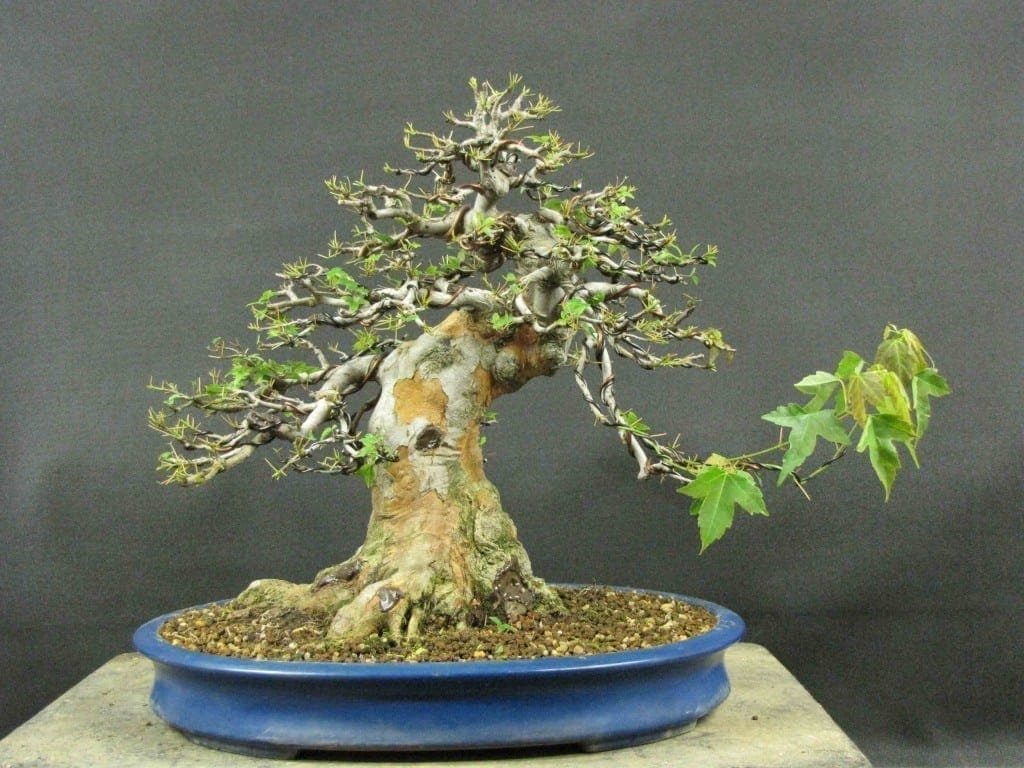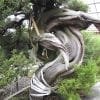Bonsai is an art practiced in miniature, achieved through techniques developed over centuries. Its rules are designed to regulate shape and growth rate. The ultimate goal of bonsai is to create balance, harmony and aesthetic pleasure.
Defoliation is one of these techniques, and is mainly used to reduce the size of leaves. It can also stimulate growth and increase the number of leaves over time. Defoliation also stimulates production of delicate new branchlets, allowing twice the growth in a single growing season.
Defoliation should not be practiced on any species of evergreen. Use it only with deciduous bonsai. Fig, maple, oak, beech, hawthorn and elm are only a few of the species that respond well, depending on the timing and skill of the pruner.
Health
Before undertaking this challenging technique, be sure the tree is healthy and vigorous. Trees gather nutrients, moisture and oxygen through photosynthesis.
Along with root systems, leaves help the tree grow. Defoliating intentionally limits this growth ability and is a shock to the tree’s system. If the tree is unhealthy to begin with, defoliating can kill it or make it vulnerable to a host of diseases.
Study the tree carefully before defoliating. Any branches that are weak will be further weakened by this technique and should be left to bud, grow leaves and get stronger.
For those who are new to the practice, it is best to defoliate only a third of the tree at any given time until experience and confidence are gained.
Tools
Leaves and buds may sometimes be pinched off with the fingers, but it is best to have a good pair of sharp pruning scissors to be sure cuts are clean and heal well. Keep shears clean by wiping them with antiseptic or rubbing alcohol before and after each use to prevent transmitting bacteria to cutting wounds.
Timing
Do not attempt this technique during the dormant seasons of spring, fall and winter. Defoliate bonsai trees in summer, when trees are actively growing leaves.
The exact timing varies with the species being defoliated. May is the right time for privet, oak, fig, elm and hawthorn bonsai. Defoliate maple, hornbeam, crabapple and fuchsia in June.
Partial Defoliation
Partially defoliating bonsai is much less of a shock to the tree than total defoliation for two reasons.
First, the trauma of leaf removal is spread over the growing season, usually beginning in May and ending in late August.
Second, only a portion of the leaves are removed, leaving plenty of smaller leaves behind to carry out photosynthesis.
Begin by clipping off the largest leaves, which are generally found at the branch tips. This will allow more light to reach the smaller branches at the center and lower parts of the tree and stimulate more vigorous growth.
More growth means more opportunities to shape and train the bonsai. Continue removing only the largest leaves as the growing season progresses. Tiny leaves will replace them toward the end of summer.
After partially defoliating a bonsai, place it in a sunny spot and give it plenty of water to help it recover.
Partial defoliation is generally considered to be the best technique for beginning bonsai enthusiasts. There is less chance of making a critical mistake in the shape and health of the tree, and the mistakes that do get made are easier to correct.
The tree’s reaction to loss of leaves can also be gauged by doing partial instead of complete defoliation.
Complete Defoliation
Complete defoliation is the removal of every leaf from the tree. Wait until the new leaves have “hardened off”. Hardening off takes place when the leaves lose their tender green color and turn shiny, tough and darker green.
Cut off each leaf at its base, leaving the stem (petiole) behind. When new buds appear and begin to pop, the petioles will dry out and fall off by themselves.
When all the leaves are gone, it will be easier to study the real structure of the tree.
For more experienced bonsai enthusiasts, this a great jumping-off point to further techniques of clamping, pruning, wiring and training the bonsai.
After complete defoliation, place the bonsai in partial sun and allow it to recover. It will need less water after defoliation because there are no leaves to nourish.
In about 3-6 weeks, new buds will begin to appear. The length of time it takes depends on the species. Shortly after that, leaves will unfurl.
Ultimately, the leaves will be smaller because they will have less time in the growing season to develop.


